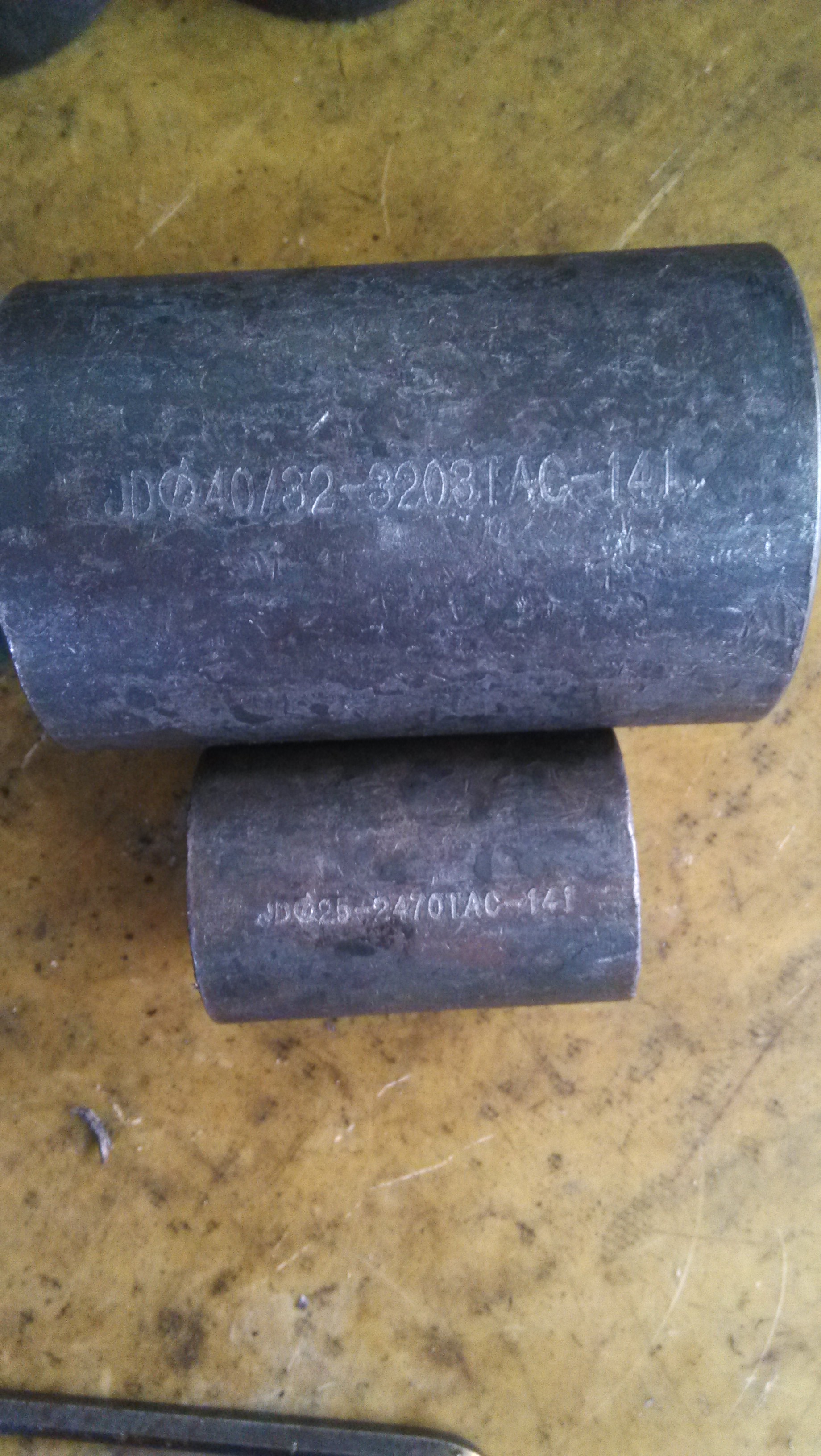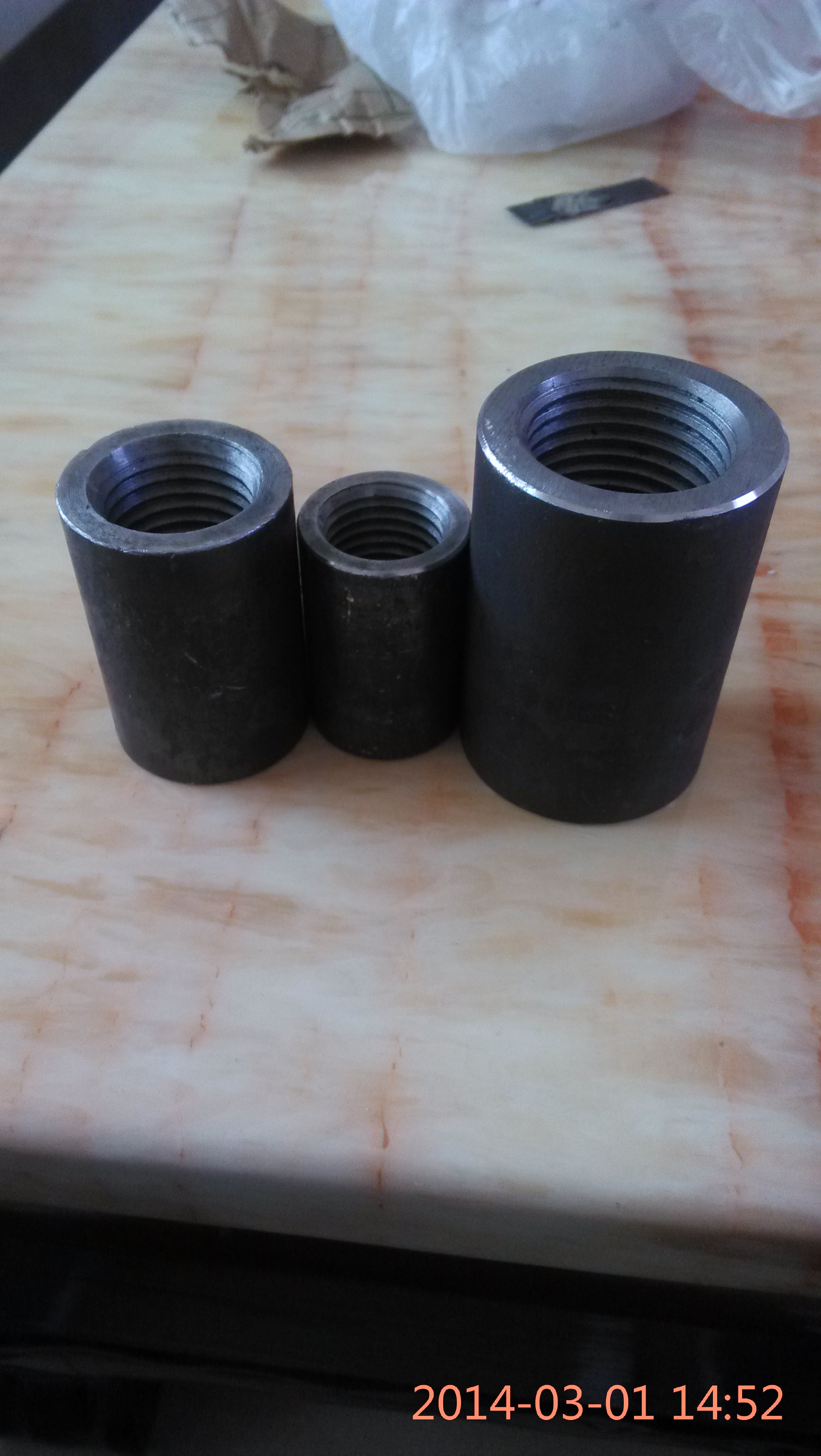The tubular plastic parison obtained by extrusion or injection molding of thermoplastic resin is heated (or heated to a softened state) and placed in a split mold. Immediately after closing the mold, compressed air is introduced into the parison to blow the plastic parison. Bulging and adhering to the inner wall of the mold, blow molding
Black Color Rebar Coupler, which is different from the Silver Color Rebar Coupler. It doesn't processed with strip the ex-circle. So this type of coupler keep the raw material color.
Only the color is black, the material is same with 45C or 40Cr material.
It is
used to rebar mechanical splicing in reinforced concrete structure, and
is designed to connect threaded rebar with diameter from 12mm to 50mm.
The tubular plastic parison obtained by extrusion or injection molding of thermoplastic resin is heated (or heated to a softened state) and placed in a split mold. Immediately after closing the mold, compressed air is introduced into the parison to blow the plastic parison. It is inflated and adhered to the inner wall of the mold, and is cooled and demolded to obtain various hollow products. The manufacturing process of the blown film is very similar in principle to the blow molding of hollow products, but it does not use a mold. From the perspective of classification of plastic processing technology, the molding process of the blown film is usually included in the extrusion. The blow molding process began to produce low density polyethylene vials during the Second World War. In the late 1950s, with the birth of high-density polyethylene and the development of blow molding machines, blow molding technology was widely used. Hollow containers can be up to several thousand liters in volume, and some have been computer controlled. Suitable plastics for blow molding include polyethylene, polyvinyl chloride, polypropylene, polyester, etc., and the resulting hollow containers are widely used as industrial packaging containers.
Plastic mold common sense
Extrusion blow molding is a method of making hollow thermoplastic parts. Well-known blow molding objects are bottles, barrels, cans, boxes and all containers for food, beverages, cosmetics, pharmaceuticals and daily necessities. Large blow molded containers are commonly used in the packaging of chemical products, lubricants and bulk materials. Other blow molded products include balls, bellows and toys. For the automotive industry, fuel tanks, car shock absorbers, seat backs, center brackets, and armrest and headrest covers are blow molded. For machinery and furniture manufacturing, blow molded parts have outer casings, door frames, frames, pots or boxes that have an open side.
The most common blown plastic extruded material is high density polyethylene, and most milk bottles are made from this polymer. Other polyolefins are also often processed by blow molding. Depending on the application, styrenic polymers, polyvinyl chloride, polyester, polyurethane, polycarbonate and other thermoplastics can also be used for blow molding.
Recently, engineering plastics are widely accepted in the automotive industry. Material selection is based on mechanical strength, weatherability, electrical properties, optical properties, and other properties.
3/4 of the blow molded articles are manufactured by extrusion blow molding. The extrusion process forces the material through a hole or die to make the product.
The extrusion blow molding process consists of 5 steps: 1. Plastic type embryo (extrusion of hollow plastic tube); 2. Close the flap mold on the parison, clamp the mold and cut the parison; 3. To the mold cavity Cold wall inflation type, adjust the opening and maintain a certain pressure during cooling, open the mold, remove the blown parts; 5. Trim the flash to obtain the finished product.
Polymer blending is defined as a process of increasing the grade of a polymer or polymer system by melt mixing. The compounding process ranges from the addition of a single additive to a variety of additive treatments, polymer alloys and reactive blending. It is estimated that one-third of the polymer production in the United States is compounded. The compounding can be tailored to the performance requirements of the final application. The compounded product has miscellaneous properties such as high gloss and excellent impact strength, or precision moldability and good stiffness. The blended polymer is typically pelletized for further processing. However, there is an increasing interest in the industry to combine compounding with the next step, such as profile extrusion, which avoids heating the polymer again.
Various types of melt mixing equipment are used, from roll mills and batch mixers to single and twin screw extruders. Continuous compounding (extrusion) is the most common equipment because it provides consistent quality and reduces operating costs. There are two types of blending: distributed blends of remarriage ingredients can be evenly distributed without the need for high shear stress. Such mixtures are known as extended or laminar mixing. Dispersive mixing, also known as intensive mixing, in which high shear stress is applied to break up the solidified solids. For example, when the additive mass is broken, the actual particle size becomes smaller. Compounding operations often require two types of mixing in one process.
Http://news.chinawj.com.cn Editor: (Hardware Business Network Information Center) http://news.chinawj.com.cn


Black Color Rebar Coupler
Black Color Cold Forged Rebar Coupler,Reducer Rebar Coupler,Rebar Coupler Joint,Civil Engineering Products Rebar Coupler
BAODING JINDI MACHINERY CO., LTD , https://www.rebarconnector.com